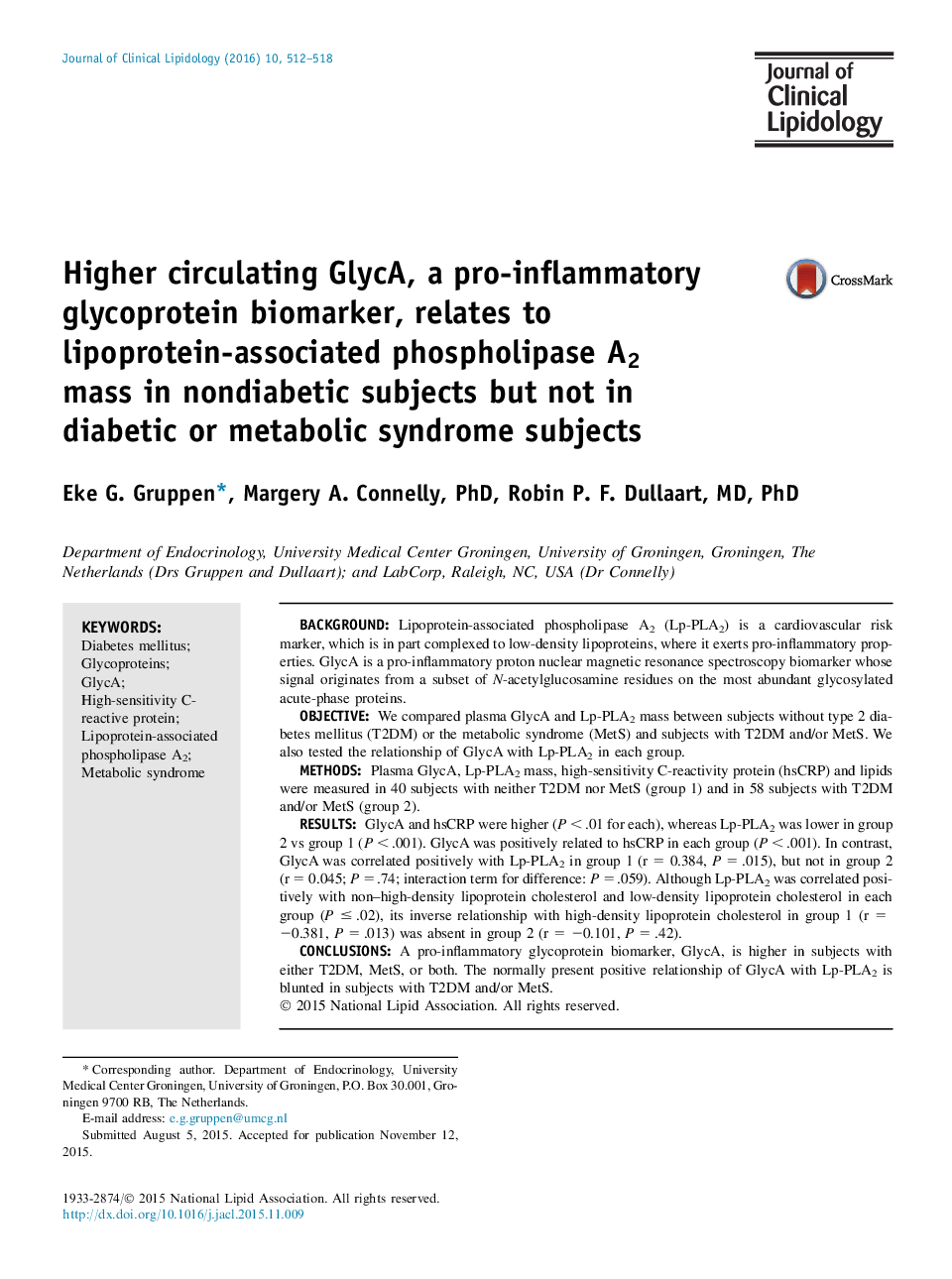| Article ID | Journal | Published Year | Pages | File Type |
|---|---|---|---|---|
| 5985300 | Journal of Clinical Lipidology | 2016 | 7 Pages |
â¢GlycA is a pro-inflammatory NMR spectroscopy-measured glycoprotein biomarker.â¢GlycA is higher, but Lp-PLA2 is lower in subjects with T2DM or MetS.â¢GlycA correlates positively with Lp-PLA2 in subjects without T2DM or MetS.â¢This may point to involvement of Lp-PLA2 in glycoprotein regulation.â¢This relationship is blunted in subjects with T2DM or MetS.
BackgroundLipoprotein-associated phospholipase A2 (Lp-PLA2) is a cardiovascular risk marker, which is in part complexed to low-density lipoproteins, where it exerts pro-inflammatory properties. GlycA is a pro-inflammatory proton nuclear magnetic resonance spectroscopy biomarker whose signal originates from a subset of N-acetylglucosamine residues on the most abundant glycosylated acute-phase proteins.ObjectiveWe compared plasma GlycA and Lp-PLA2 mass between subjects without type 2 diabetes mellitus (T2DM) or the metabolic syndrome (MetS) and subjects with T2DM and/or MetS. We also tested the relationship of GlycA with Lp-PLA2 in each group.MethodsPlasma GlycA, Lp-PLA2 mass, high-sensitivity C-reactivity protein (hsCRP) and lipids were measured in 40 subjects with neither T2DM nor MetS (group 1) and in 58 subjects with T2DM and/or MetS (group 2).ResultsGlycA and hsCRP were higher (P < .01 for each), whereas Lp-PLA2 was lower in group 2 vs group 1 (P < .001). GlycA was positively related to hsCRP in each group (P < .001). In contrast, GlycA was correlated positively with Lp-PLA2 in group 1 (r = 0.384, P = .015), but not in group 2 (r = 0.045; P = .74; interaction term for difference: P = .059). Although Lp-PLA2 was correlated positively with non-high-density lipoprotein cholesterol and low-density lipoprotein cholesterol in each group (P â¤Â .02), its inverse relationship with high-density lipoprotein cholesterol in group 1 (r = â0.381, P = .013) was absent in group 2 (r = â0.101, P = .42).ConclusionsA pro-inflammatory glycoprotein biomarker, GlycA, is higher in subjects with either T2DM, MetS, or both. The normally present positive relationship of GlycA with Lp-PLA2 is blunted in subjects with T2DM and/or MetS.
